Resurfacing
By Laura Davis
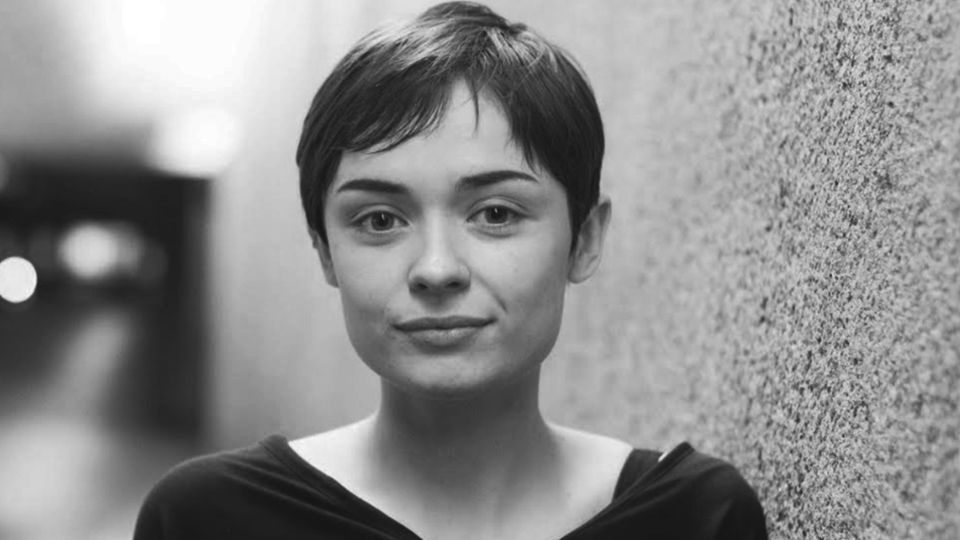

Laura Davis participated in the Critics Academy during the 72nd Locarno Film Festival. She is a pre-selector for Open City Documentary Festival and contributes to publications including Another Gaze and MUBI Notebook. She attended the South London Gallery REcreative Film School and completed her short Storm Ophelia this year.
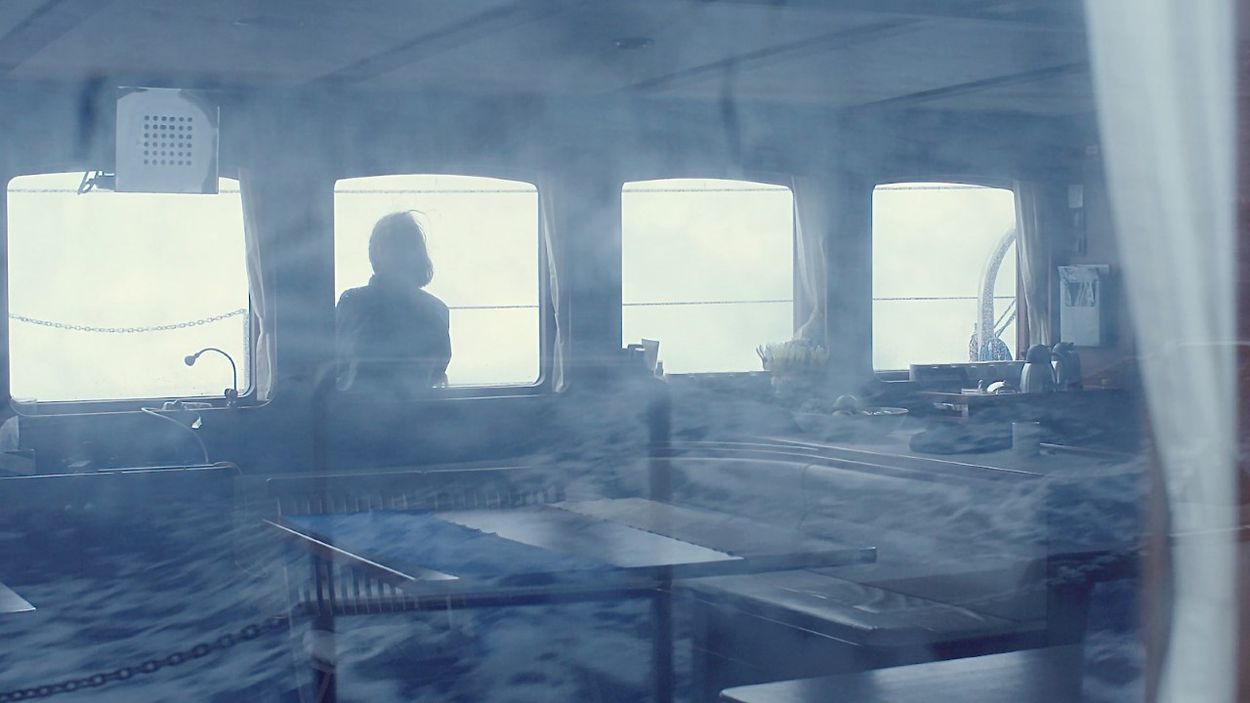
Being invited to participate in the Critics Academy was my first trip to Switzerland. It is a country I had romanticised for its vast scale: the land of CERN and particle collisions, hydroelectric dams and vast lakes. It is where Albert Einstein came up with his theory of relativity and Tim Burners-Lee invented the World Wide Web. It is where in 1916, following the eruption of Mt Tambora, Percy Shelley, Mary Wollstonecraft and Lord Byron spent ‘the year without a summer’ under the ashen sky writing ghost stories.
It is the place in Europe most prone to lighting strikes, we were warned. As we drove up the mountains from Milan Malpensa, the clouds started to descend. The roadside was lined with cordyline plants and palms. Everything began to feel tropical and new. The town of Locarno is two hundred meters above sea level and 14.6 millibars lower in barometric air pressure than my home in south east London. That means the atmosphere can become very heavy, and suddenly ripe for a storm.
I was taught to count the number of seconds between the lightning bolt and the thunderclap. One second meant the storm is one mile away, two seconds two, et cetera. We sit down in a pizzeria the evening before the festival begins. The town is empty of cinephiles, just pensioners and holidaymakers alternating between the waterpark, falconeria and casino. With a suddenness that I am unfamiliar with, torrential rain begins to pour. There is no chance to count the number of seconds between the thunder and lightning; the storm is directly above us.
Thunder and lightning, sound and light. It is the first cinema, said the jet-lagged critic who was yet to catch a film. We shared facts about the projection booth in Piazza Grande and the erotic history of the Grand Rex cinema. For all the films I saw throughout the festival, what stuck with me most was the configuration of sound and light in the valley. The town is located on the northern shore of Lake Maggiore. The lake plays tricks on you. The way sound carries over water is disorientating, it makes hunting down parties an event in itself. Locarno straddles the Lugano Prealps and the Lepontine Alps. As the sun rises from behind the mountains it inflames the day and in the evening it sets Cardada ablaze.
Like the mountains, the waves rise and rise. All that crashes down must resurface.
My patchy wifi means watching a film does not always have the thunder and lightning impact it that does on the Piazza Grande. I have said so many prayers to my wifi router I could start a whole religion out of its ineptitude. It has been a funny few months but I’m not going to get into that. There is already so much at stake. I am asked if I’d like to write on Helena Wittman. I missed her films when they showed at the cinema here, so I watch them on my laptop. Helena sends me the links along with warm wishes from Cassis. The films are like postcards. They are very short and say considered, intelligent things. In every film of hers that I’ve seen there are absences — ghosts — that necessite we write: I wish you were here. If you could plug headphones into a postcard you might be closest to what it is like to watch a Helena Wittman film.
A group of people asked themselves where they could go.
The otherness of her 2018 short Ada Kaleh really struck a chord with me. Filmed entirely in an apartment shared by a group of young people, Wittman introduces the film by showing the chipped plaster on its walls. At first glance the blue and yellow pattern is incidental, and then on a closer look we start to notice land masses and peninsulas, as if looking at a map of the world. It seems to me the blue overcoat is chipped to reveal the yellow as if it is the land that emerges from the sea, as opposed to the sea that rises to cover the land. The camera pans left to right and right to left as if looking for clues. We hear the cries of children in the square below and briefly see a church. It is summer, the location indeterminate.
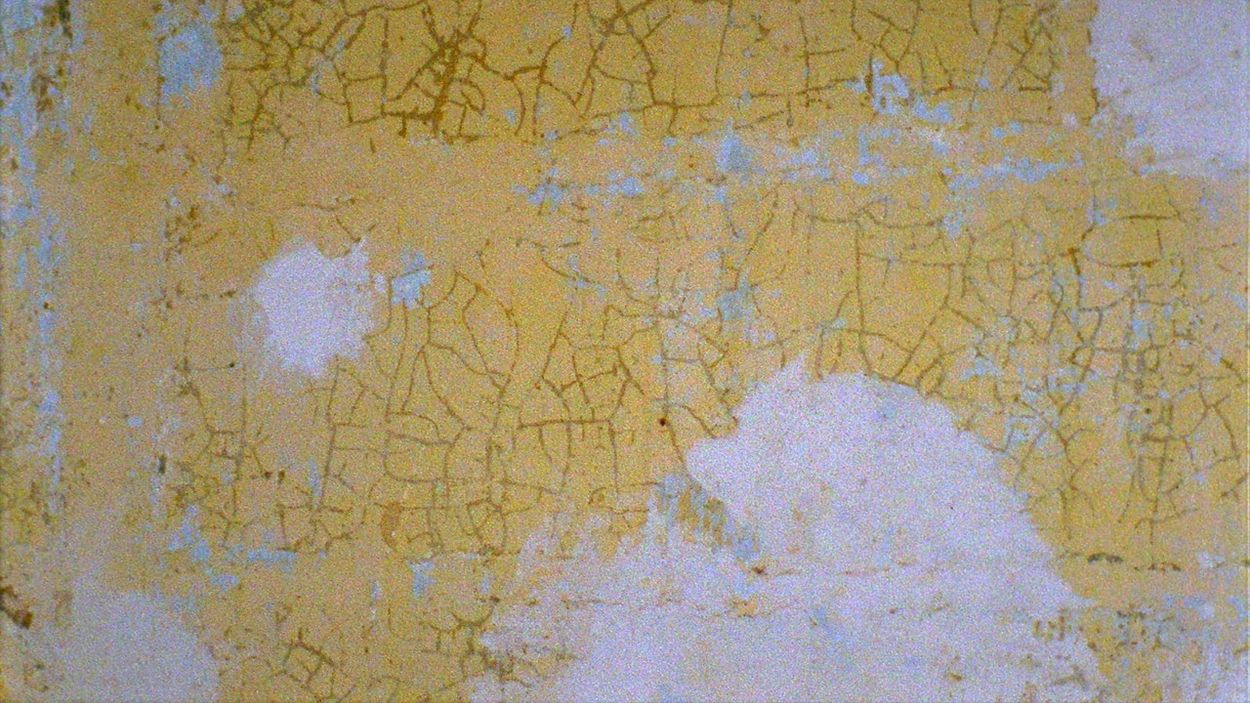
Ada Kaleh is named after a Turkish island that is now submerged. The island lies beneath the point at which the Danube passes through a series of gorges as it descends the Carpathian Mountains. The construction of the Iron Gates hydroelectric dam by the Communist governments of Yugoslavia and Romania in the 1970s drowned the island. Its poplar and chestnut trees, crumbling battlements and toppled minarets are now thirty meters underwater. The island was a mile-long strip of sandy soil between Romania and Serbia, home to six hundred and eighty Turks. It was known as a port and smuggler’s nest and struck a chord in the imagination of many utopians. In my mind, the yellow emerging from the blue brings hope: the land will rise again.
They would listen to the first verse of a song over and over again. They didn’t trust the dichotomies, but still they could find themselves between the lines.
The song referred to in the preface is ‘Samba Fatal’ by Marcos Valle. It speaks of someone waking up but caught between magical and mystical, practical and political, prophetic and poetic, tragic and macabre. This leaves plenty open to interpretation. To me, it likens the inhabitants of the sunken island to the inhabitants of the apartment — both there and then not; liminal, transient.
As the camera pans back and forth a narrative emerges through the cardboard boxes, the washing hanging to dry and the bodies dozing beside the open windows. Four people are only seen all together in one early shot and then they are seen individually throughout the apartment. A couple disappear, leaving traces: kettle still on the stove, a window left open. The remaining people drift into a deep sleep. Watching this film is like looking around the house just before you have to leave it. As the camera pans left to right we feel the same push and pull of the final moment, the faint panic as time creeps up on us and all you want is to stay a little longer.
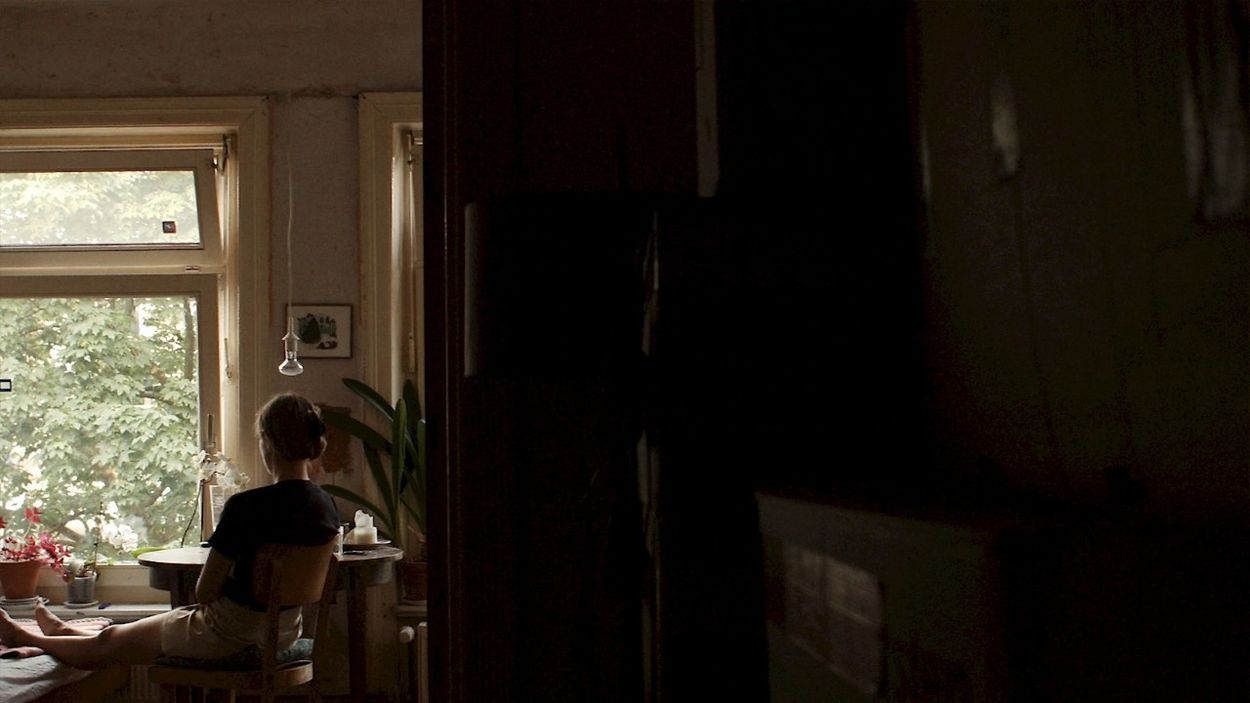
Wittmann’s 2014 short 21,3°C is composed of eleven long, elegant shots that look out of the window of a room onto the tower block opposite. Between them someone changes the flowers and draws the curtains. The inhabitants of the opposite building adjust their blinds and are occasionally seen passing in front of their windows. The sunlight enters the room from different angles and there is, at one point, heavy rain. Sounds of a construction site threaten the area with change. We can hear music from a neighbouring apartment, a party, perhaps — or rehearsals for something yet to come.
How much time lapses between each shot? In my head I imagine a few weeks, guessing that the ten different vases of flowers suggest the course of nearly a year. The feeling changes so much and yet only once does a person enter the frame. I am told the voice on the phone says he is not alone and therefore cannot speak. This is not subtitled, however, and so for non-German speakers the ghostly eavesdropper passes undetected. Below the window frame are two radiators. While the thermostat is fixed to the decimal point it is hard to imagine the temperature throughout the duration of the film, and therefore throughout the many months of filming, remains constant. Chaos reigns.
The temperature fluctuates, flowers must be replaced and a ghost lurks. In her notes to Ada Kaleh, Birgit Glombitza describes the film as a Plato’s cave of light and shadow. It’s only interested in a context-giving world as a reflection on glass and rock. There is no judgement, no interpretation, just seeing and collecting.
The same could be said of 21,3°C. We feel as if someone may have spent their whole life in the shadow world of these four walls, to ultimately leave them for the wider world. The imprisoned cave-dweller is a mere observer. There is so much more out there, Wittman writes on her postcards. We leave the cave. Each short is a tightly contained interior that is also, paradoxically, panoramic.
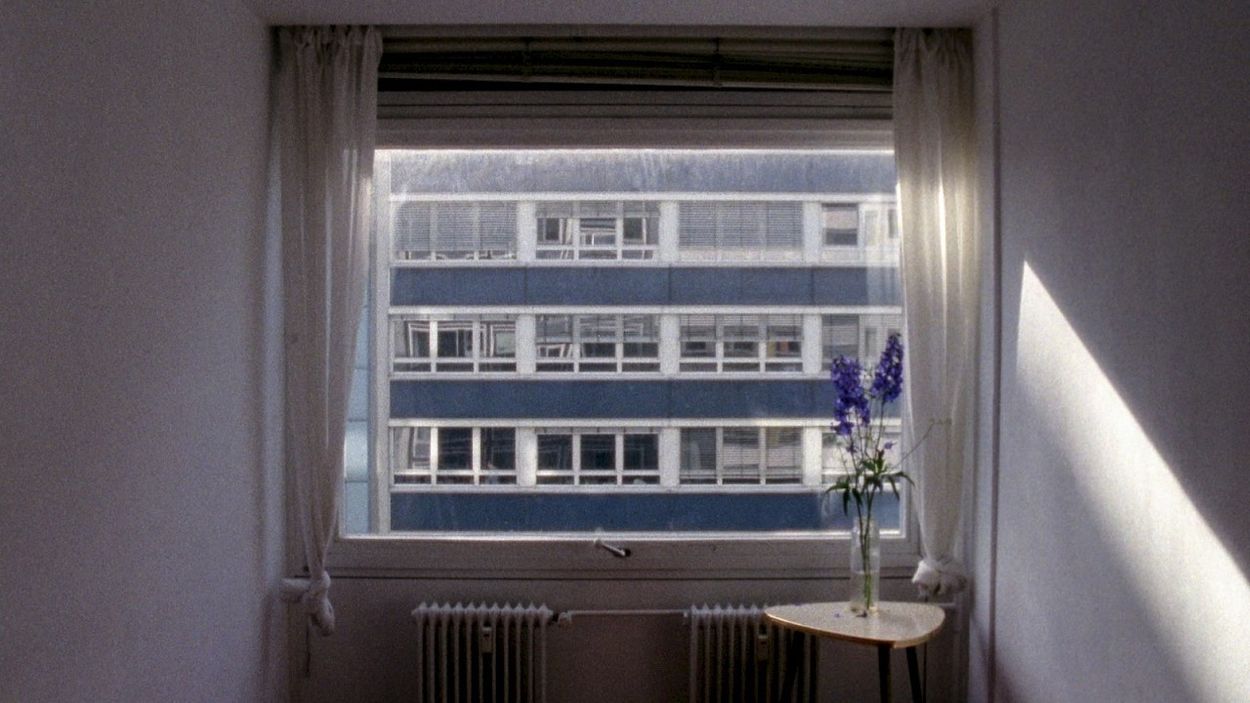
In her 2017 feature Drift, Wittmann’s static shots are set in motion by Nika Breithaupt’s field recordings. This time, we travel. The film journeys by boat, train, car, bicycle and foot. We begin on Sylt, an island just off the German and Danish border looking out to the North Sea. It is the last night Theresa will spend with her friend Josefina before she travels to the Azores and Josefina to Buenos Aires. The second act is a journey across the Atlantic in which the narrative turns to the swelling seascape. Theresa spends some time in the Caribbean before returning to Hamburg where the film ends with her Skype conversation with Argentina. None of these destinations are marked by title cards as such, they only become clear during the credits. Following Theresa between Sylt, the Azores and Antigua, the film can be split into three acts — acts that then divide into themselves. If in the first we follow the narrative of one protagonist, then in the second we follow another: the ocean. Producing sculptural and geographical triangulation, its predetermined formal symmetry suggests a reference, perhaps, to the structuralist filmmakers of the 1960s.
Throughout the film but predominantly in the middle section, we look out again and again at the sea through different configurations of camera, moon, horizon and boat. Our attention is directed to how the light refracts through the waves and how sound bounces off water. Like the mountains, the waves rise and rise. All that crashes down must resurface. Drift takes a physical form, maybe like one of the seashells that Theresa scours the beach for. It spirals into itself tightly and when held up against the ear, utters no words but the language of the waves.
If each static shot is a postcard, then Drift is a house of cards held aloft by the third space of the final Macbook Skype conversation between the two friends. Several scenes of Theresa working at her laptop precede this, implicating the simulated digital world — a Plato’s cave itself — in her journey across the world. The laptop screen is a space othered to the audience, for we never get to see what Theresa is working on. We do not know whether the laptop screen confirms or contradicts her surroundings; she could be anywhere. For all we know she could be sitting looking at the reflection of her surroundings in the black screen.
About an hour into Drift, Nika Breithaupt’s sound design subtly shifts from field recording to synthetic composition. The picture cannot breach the ocean’s surface but the soundscape fathoms its depths. A low, protracted sound begins — perhaps that of a fog horn — as the image switches to nighttime. As the sound of a fog horn reverberates across the ocean, the ink-black oil waters of midnight become more menacing. The result is a disorientating, literally upsetting, plunge into the underwater other-space.
Since Ada Kaleh wasn’t filmed underwater — or anywhere near the Danube for that matter — the submerged, Turkish island haunts the film, since it is absent but still felt. As in the rest of her films, Wittmann offers a new dimension to the image before us. From the standpoint of the reflective surface — often a window pane, laptop screen or still body of water — Wittmann’s characters notice how they have been transplanted from where they are to where their reflection looks back at them. They are jolted by the displacement.
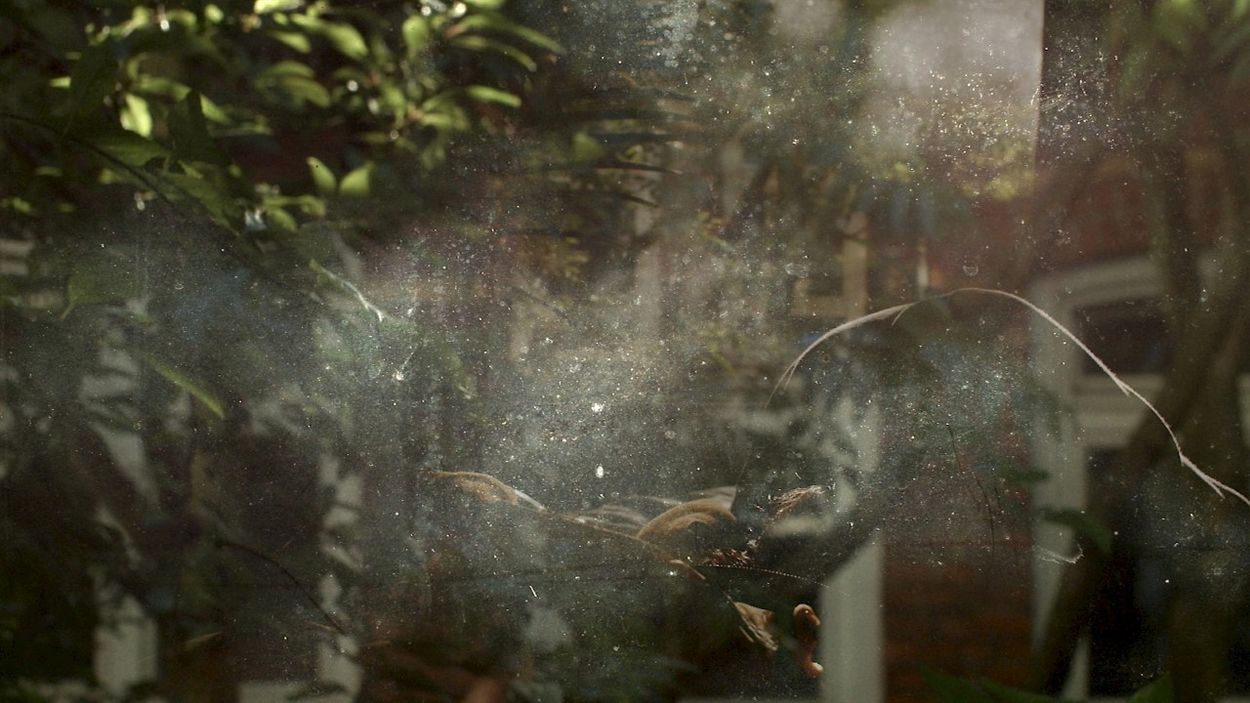
Mid-festival, we hire a boat to take us out onto Lake Maggiore. It is a windless day and there are no clouds in the sky. The water is still. After turning off the engine, I lean over the side. I catch my reflection but somehow it seems to notice me first. There I am, again, rising from the depths below.
Like the yellow plasterboard emerging from the blue overcoat in Drift, the sunken Atlantis resurfaces. Seen from the middle of the lake, something about the way the mountains rise from the water makes me think we have found it. Yes, I am really sad not to be back in Locarno this year; yes, I miss my friends; and yes, I have not been to the cinema since mid-March. But when I look back through my camera roll to 13 August it reassures me that our grinning faces are still out there, all together, on the lake.